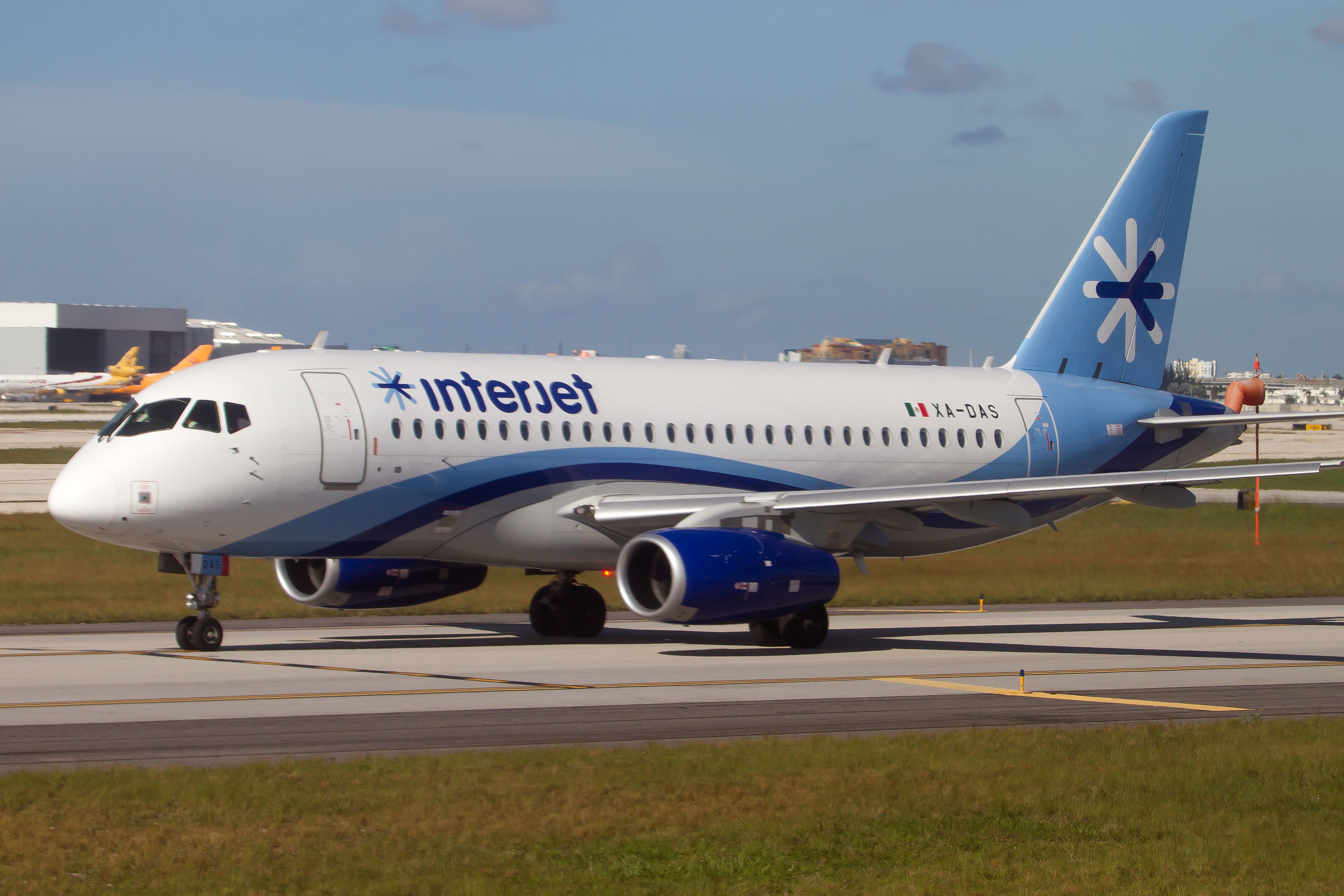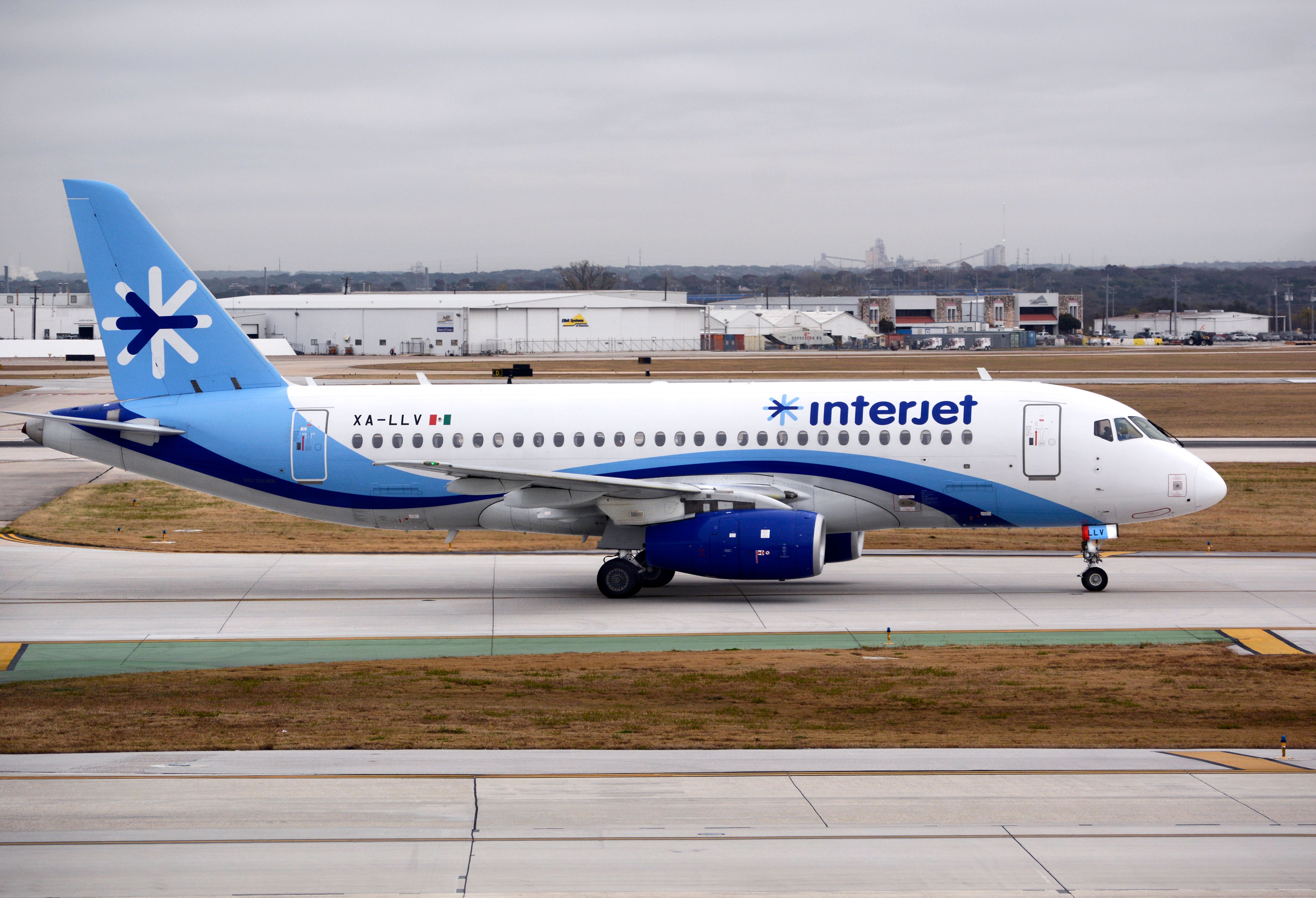The owners of the former Mexican carrier Interjet are seemingly trying to revive the airline after nearly a year and a half without operating commercial flights. Nonetheless, the Mexican government has recently outlined the main requirement Interjet needs to fulfill if it wants to have an opportunity to fly again.
Interjet’s hopes?
The former Mexican carrier Interjet is looking to fly again, despite losing all its leased Airbus A320 family fleet in 2020, having its Sukhoi Superjet fleet impounded, and facing an enormous debt with several creditors, including the local government.
In the last few months, Carlos del Valle, son of Interjet’s current owner, has met with government and airport officials, trying to bring the airline back into the skies.
He has said that the objective is to restart operations with a fleet composed of ten Airbus A320 aircraft. The airline could have operations from Felipe Angeles International Airport (IATA code NLU), the flagship project of the current government. Mr Del Valle has even said which destinations he would like Interjet to serve: Cancun and Tijuana.
Nonetheless, despite all the social media publications and the seeming goodwill of putting Interjet back in action, there are no concrete actions pointing out a revival.
Interjet still faces a strike by the former employees has debts with the Mexican government, former employees, providers, clients, lessors, and more.
Could Interjet fly again?
Reviving a former airline is not an easy task, particularly in Mexico. Over the years, many other carriers have ceased operations, never to fly again. The leading example in this country is Mexicana de Aviación, Mexico’s oldest carrier (and one of the oldest worldwide), which stopped flying in 2010. It is still facing a lengthy bankruptcy process.
Interjet is not facing an easier road ahead either. Rogelio Jiménez, sub-Secretary of Transportation, recently said that the government will not block a possible comeback by Interjet. Nonetheless, if the airline wants to fly again, first, it will have to settle its current debt, which is about 40 billion pesos (nearly US$2 billion).
In an interview with the local newspaper, El Financiero, he said,
“Let’s be very clear. If they want to operate, they first have to pay.”
Interjet’s debacle
Interjet stopped flying in December 2020. It was the only Mexican airline to cease operations due to the ongoing COVID-19 crisis.
Prior to the pandemic, Interjet already faced enormous financial pressure due to an inability to compete against low-cost carriers Volaris and Viva Aerobus and acquiring 22 Sukhoi Superjet aircraft in a move that proved costly.
The COVID-19 crisis only rushed Interjet’s debacle, and by May, the airline began losing its Airbus A320 fleet. Lessors began recovering their aircraft and deploying them with other airlines worldwide.
In the meantime, Volaris and Viva Aerobus quickly began taking the slots, routes, and, ultimately, passengers and revenues from Interjet. These two low-cost carriers grew enormously in 2021, surpassing their pre-pandemic traffic levels despite the ongoing crisis in the airline industry sector.
All the while, the Interjet brand suffered a possibly irremovable stain on its brand. In the last few months, Interjet canceled many flights leaving passengers stranded or with irredeemable and worthless vouchers for future flights that never happened.
Would you like to see Interjet back in the skies? Let us know in the comments below.


